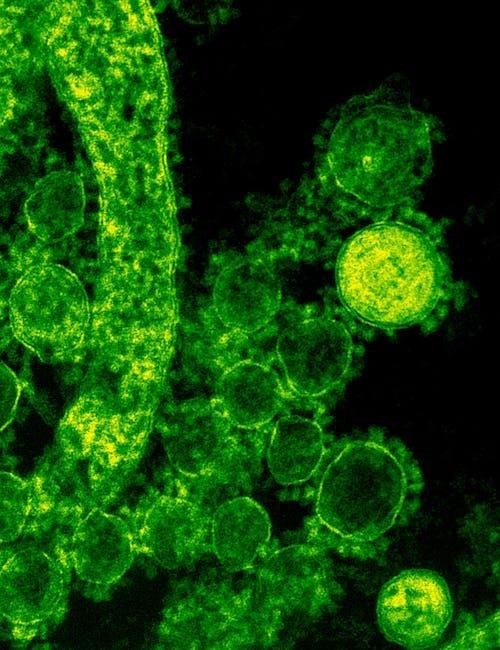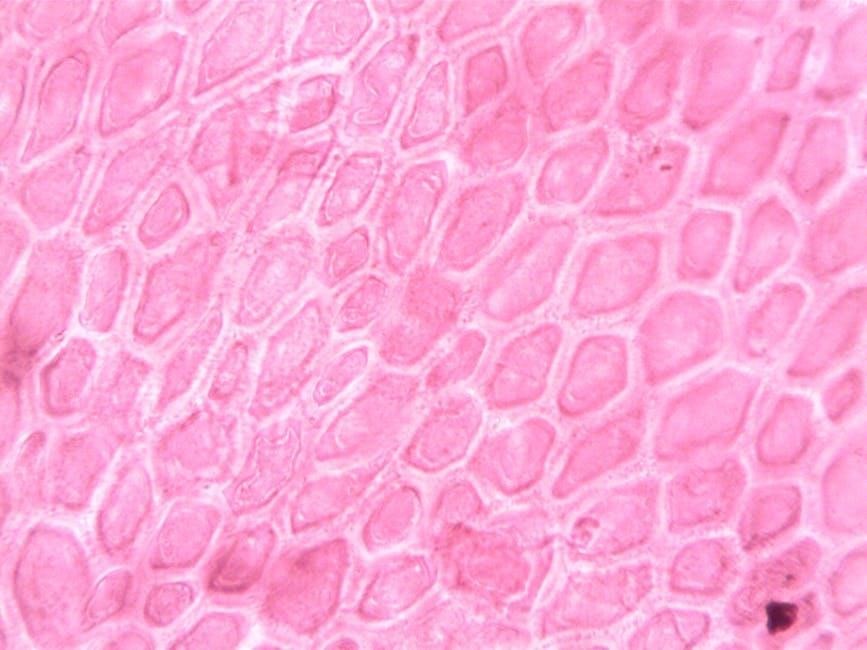cell defense the plasma membrane answer key pdf
The plasma membrane is a critical structure in cell defense, acting as a protective barrier and regulating interactions with the external environment. It ensures cellular integrity and survival by controlling permeability and facilitating communication, making it essential for maintaining internal balance and responding to threats.
1.1 Overview of the Plasma Membrane’s Role in Cell Defense
The plasma membrane serves as the cell’s first line of defense, acting as a physical barrier that prevents harmful substances and pathogens from entering while allowing essential nutrients and molecules to pass. Its selective permeability ensures proper cellular function and protection. Additionally, the membrane contains receptors and signaling molecules that detect threats and initiate defense responses, making it a critical structure for maintaining cellular integrity and overall survival. Its dynamic nature allows it to adapt to environmental changes, ensuring effective defense mechanisms are always active.
1.2 Importance of the Plasma Membrane in Maintaining Cellular Integrity
The plasma membrane is vital for maintaining cellular integrity by regulating the movement of substances, signaling, and protecting internal structures. It acts as a boundary, preventing harmful pathogens and toxins from entering while allowing essential nutrients. Its structural integrity ensures proper cellular function, maintaining homeostasis and enabling cells to respond to environmental changes. Damage to the membrane can lead to loss of cellular contents and compromised function, emphasizing its importance in preserving cell health and survival.

Structure of the Plasma Membrane
The plasma membrane consists of a phospholipid bilayer with embedded proteins, cholesterol, and carbohydrates. This dynamic structure maintains cellular integrity while facilitating essential functions like transport and signaling.
2.1 Phospholipid Bilayer: The Foundation of the Plasma Membrane
The phospholipid bilayer forms the structural backbone of the plasma membrane. Composed of two layers of phospholipid molecules, it provides a hydrophobic core and hydrophilic surfaces, ensuring membrane stability and selectively controlling the passage of molecules. This bilayer is semi-permeable, allowing essential nutrients to enter while keeping harmful substances out, crucial for maintaining homeostasis and cellular defense. Its fluidity is influenced by lipid composition and temperature, enabling dynamic interactions and membrane functionality.
2.2 Embedded Proteins: Their Role in Membrane Function
Embedded proteins within the plasma membrane are essential for its functionality. These proteins act as channels, carriers, and receptors, facilitating transport, signaling, and cell recognition. They regulate the movement of ions and molecules, enable communication between cells, and play a key role in immune responses. Some proteins are permanently attached, while others are loosely associated, contributing to the membrane’s dynamic nature and its ability to adapt to changing conditions, thereby enhancing cellular defense mechanisms and overall membrane performance.
2.3 Cholesterol and Carbohydrates: Additional Components of the Plasma Membrane
Cholesterol and carbohydrates are vital components of the plasma membrane, contributing to its structure and function. Cholesterol regulates membrane fluidity, ensuring stability and proper functioning of embedded proteins. Carbohydrates, attached to proteins or lipids, form glycoproteins and glycolipids, which are crucial for cell recognition, signaling, and defense. These molecules help the cell interact with its environment, facilitate immune responses, and protect against pathogens, making them indispensable for maintaining cellular integrity and defense mechanisms. Their presence ensures the membrane’s dynamic and protective nature.
Functions of the Plasma Membrane in Cell Defense
The plasma membrane acts as a protective barrier, regulates permeability, and facilitates signaling, enabling the cell to recognize and respond to threats while maintaining internal stability.
3.1 Selective Permeability: Controlling What Enters and Leaves the Cell
The plasma membrane’s selective permeability is crucial for cell defense, allowing essential nutrients and water to enter while restricting harmful substances. This regulation is achieved through passive transport, such as diffusion and osmosis, and active transport, which requires energy. The membrane’s structure, including phospholipids and embedded proteins, ensures precise control over molecular movement. This function maintains internal balance, protects the cell from toxins, and enables proper cellular signaling, making it vital for survival and overall cellular health.
3.2 Transport Mechanisms: Active and Passive Transport
Transport mechanisms are vital for cell defense, enabling the movement of molecules across the plasma membrane. Passive transport, including diffusion and osmosis, relies on concentration gradients and requires no energy. Active transport involves carrier proteins that use energy to move molecules against gradients, ensuring essential nutrients enter and toxins are expelled. These processes maintain cellular homeostasis and support immune responses, highlighting their critical role in protecting the cell and facilitating survival.
3.3 Signal Transduction: Communication Across the Membrane
Signal transduction enables communication across the plasma membrane, crucial for cell defense. Membrane receptors detect external signals, such as pathogens, and activate intracellular signaling pathways. These pathways trigger responses like immune reactions or membrane repair, ensuring the cell reacts appropriately to threats. This process is vital for maintaining cellular integrity and initiating defense mechanisms, making it a cornerstone of cell survival and adaptation in changing environments.

Defense Mechanisms of the Plasma Membrane
The plasma membrane acts as a dynamic barrier, employing receptors and signaling molecules to detect and respond to threats, ensuring protection and maintaining cellular homeostasis effectively.
4.1 Physical Barrier: Preventing Pathogen Entry
The plasma membrane serves as the first line of defense, physically preventing pathogens from entering the cell. Its phospholipid bilayer structure, along with embedded proteins, creates a selective barrier that restricts the passage of harmful substances. The hydrophobic core of the membrane repels water-soluble molecules, while its dynamic nature allows for controlled interactions. This structural integrity ensures that pathogens cannot easily penetrate, protecting the cell’s internal environment from external threats and maintaining cellular homeostasis.
4.2 Membrane Receptors: Detecting and Responding to Threats
Membrane receptors play a pivotal role in detecting pathogens and initiating defense responses. These receptors recognize specific molecular patterns on pathogens, such as extracellular polysaccharides, triggering signaling cascades. This activation leads to immune responses, including the recruitment of defense molecules and the production of antibodies. By acting as sensors, membrane receptors enable the cell to identify threats and mount appropriate reactions, ensuring the maintenance of cellular health and preventing infection. Their role is critical in both innate and adaptive immune responses, safeguarding the cell from harm.
4.3 Membrane-Bound Signaling Molecules: Activating Defense Pathways
Membrane-bound signaling molecules are essential for activating defense pathways, enabling cells to respond to external threats. These molecules, often organized into nanodomains, facilitate efficient signal transduction by clustering signaling components. For instance, peroxiredoxin 6 helps repair peroxidized membranes, while Piscidin 1 targets viral lipid bilayers. By recognizing specific lipid compositions or pathogen-associated signals, these molecules initiate protective mechanisms, such as immune signaling or membrane repair, ensuring the cell can counteract threats effectively and maintain its integrity.

Role of Lipids in Plasma Membrane Defense
Lipids in the plasma membrane play a crucial role in defense by maintaining structural integrity and fluidity, enabling dynamic responses to pathogens and environmental changes.
5.1 Lipid Composition and Its Impact on Membrane Fluidity
The lipid composition of the plasma membrane, primarily consisting of phospholipids, cholesterol, and carbohydrates, determines its fluidity. Phospholipids form the bilayer, while cholesterol modulates viscosity, ensuring the membrane remains flexible yet stable. This balance is crucial for cell defense, as it allows the membrane to maintain its barrier function while enabling dynamic processes like transport and signaling. Pathogens often target lipid composition to disrupt membrane integrity, highlighting its importance in cellular protection and fluidity regulation.
5.2 Lipid Distribution and Membrane Domain Formation
Lipid distribution within the plasma membrane is not uniform, leading to the formation of distinct membrane domains, such as lipid rafts. These regions, enriched with cholesterol and specific lipids, serve as platforms for signaling and defense mechanisms. Lipid organization influences membrane fluidity and protein function, enabling efficient responses to pathogens. Pathogens often exploit these domains to breach the membrane, highlighting the importance of lipid distribution in maintaining cellular defense and structural integrity. This dynamic organization is vital for cell survival and function.
5.3 Lipid Signaling in Response to Pathogens
Lipid signaling plays a crucial role in the plasma membrane’s response to pathogens. Specific lipids, such as ceramides and diacylglycerols, act as signaling molecules to activate immune responses. These lipids can alter membrane structure, facilitating the recruitment of defense proteins. Pathogen-associated molecular patterns trigger lipid signaling cascades, leading to the production of pro-inflammatory molecules. This lipid-mediated communication ensures rapid and targeted defense mechanisms, protecting the cell from infection while maintaining membrane integrity and function. Lipid signaling is thus essential for effective pathogen defense.

Protein Function in Membrane Defense
Proteins in the plasma membrane play vital roles in defense, acting as receptors, channels, and enzymes. They facilitate transport, signaling, and defense against pathogens, ensuring cellular protection and function. Proteins regulate the passage of molecules, detect threats, and activate immune responses, making them indispensable in maintaining membrane integrity and overall cell defense mechanisms. Their diverse functions are critical for survival and proper cellular operation in hostile environments.
6.1 Channel Proteins: Regulating Ion and Molecule Transport
Channel proteins form pores in the plasma membrane, enabling the regulated transport of ions and small molecules. They are critical for maintaining cellular homeostasis by controlling the flow of essential nutrients and waste products. These proteins often function as gated channels, opening or closing in response to specific signals, such as voltage changes or ligand binding. For example, ion channels facilitate nerve signaling by allowing rapid ion flux, while water channels (aquaporins) regulate water transport. Their selective permeability ensures proper ion balance and cellular function, making them vital for cell defense and survival.
6.2 Carrier Proteins: Facilitating Active Transport
Carrier proteins are essential for active transport, moving molecules against concentration gradients using energy. They bind specific substrates, undergo conformational changes, and release them on the other side of the membrane. This process is vital for cell defense, as it allows the uptake of nutrients and expulsion of toxins. Carrier proteins ensure the cell maintains optimal internal conditions, enabling proper metabolic function and defense mechanisms. Their role in selective transport highlights their importance in cellular integrity and survival. Efficient operation of these proteins is crucial for overall cell health and defense systems.
6.3 Receptor Proteins: Initiating Signal Cascades
Receptor proteins on the plasma membrane are crucial for detecting external signals, such as hormones or pathogens, and initiating intracellular responses. Upon binding specific ligands, these proteins undergo structural changes that activate signaling cascades. These cascades often involve kinases or other signaling molecules, leading to gene expression changes or cellular defenses. By transmitting external signals, receptor proteins play a vital role in coordinating cell defense mechanisms and maintaining cellular homeostasis. Their function is essential for rapid and targeted responses to environmental challenges and threats.

Membrane Repair Mechanisms
Cells repair damaged membranes through calcium-dependent processes and vesicle fusion, restoring integrity and function. These mechanisms ensure survival by promptly addressing disruptions caused by pathogens or injury.
7.1 Detection of Membrane Damage
Cells detect membrane damage through signaling pathways activated by disruptions in membrane integrity. Increased intracellular calcium levels often trigger these responses, alerting the cell to breaches. Specific proteins, such as annexins and dysferlin, play roles in identifying damaged regions. These mechanisms ensure rapid detection, enabling timely repair processes to restore membrane function and maintain cellular homeostasis. Efficient detection is crucial for preventing further damage and ensuring cell survival, highlighting the plasma membrane’s dynamic role in cell defense.
7.2 Repair Processes: Restoring Membrane Integrity
The plasma membrane repairs damage through tightly regulated processes. Calcium signaling triggers repair proteins to the damaged site. Vesicles fuse rapidly, sealing breaches. Proteins like dysferlin promote resealing, and enzymes restore lipid integrity. This swift repair maintains cellular homeostasis and function effectively.
7.3 Role of Ca2+ in Membrane Repair
Calcium ions (Ca²⁺) play a crucial role in membrane repair by signaling damage detection. Ca²⁺ influx triggers repair proteins to the injury site, promoting vesicle fusion and membrane resealing. This process rapidly restores membrane integrity, preventing cellular contents leakage and maintaining homeostasis efficiently.

Pathogen Interaction with the Plasma Membrane
Pathogens interact with the plasma membrane through various strategies to breach its protective functions, exploiting its components to gain entry and compromise cellular defense mechanisms effectively.
8.1 Pathogen Strategies to Breach the Plasma Membrane
Pathogens employ diverse strategies to breach the plasma membrane, such as producing enzymes that degrade membrane components or utilizing membrane receptors for entry. Some pathogens, like certain bacteria, release toxins that disrupt membrane integrity, while others, such as enveloped viruses, fuse their lipid bilayer with the host membrane to gain access. Additionally, pathogens may exploit host cell signaling pathways to facilitate their invasion, ensuring efficient entry and survival within the host cell.
8.2 Membrane-Bound Organelles and Pathogen Defense
Membrane-bound organelles play a vital role in pathogen defense by coordinating cellular responses and producing defense molecules. The endoplasmic reticulum synthesizes antibodies that neutralize pathogens, while the Golgi apparatus modifies these proteins for secretion; Mitochondria provide the energy required for these processes. Additionally, membrane-bound organelles like lysosomes contain digestive enzymes that break down pathogens. These organelles work together to maintain cellular integrity and combat infections, highlighting their essential role in the cell’s defense mechanisms.
8.3 Role of the Plasma Membrane in Limiting Pathogen Entry
The plasma membrane acts as a primary barrier against pathogens by controlling the passage of molecules through its selective permeability. Its lipid bilayer and embedded proteins create a physical obstacle, preventing unauthorized entry. Membrane receptors detect pathogens, triggering responses like signaling cascades or membrane remodeling. The plasma membrane also adapts by tightening junctions or altering receptor availability, reducing pathogen access. This dynamic defense mechanism ensures the cell maintains its internal environment while effectively recognizing and responding to potential threats, making it a critical first line of defense against infection.

Immunological Defense and the Plasma Membrane
The plasma membrane plays a vital role in immunological defense by facilitating the recognition and neutralization of pathogens through membrane receptors and signaling molecules, enhancing immune responses.
9.1 Role of Membrane Receptors in Immune Response
Membrane receptors are crucial in immune responses, recognizing pathogens and triggering signaling cascades. They facilitate antigen presentation and activate immune cells, ensuring targeted defense mechanisms. These receptors enable cells to distinguish harmful substances, initiating appropriate immune reactions. Their role is essential in maintaining immune system efficiency and preventing infections.
9.2 Membrane-Bound Signaling Molecules in Immunity
Membrane-bound signaling molecules are vital for immune coordination. They transmit signals upon pathogen detection, activating immune cells and initiating defense mechanisms. These molecules ensure precise communication between cells, enhancing the immune response’s effectiveness. Their role is pivotal in maintaining immune homeostasis and combating infections efficiently.
9.3 Plasma Membrane’s Role in Antitumor Immunity
The plasma membrane plays a crucial role in antitumor immunity by facilitating immune cell recognition and activation. It enables the presentation of tumor antigens and the transmission of signals that activate immune responses. Membrane-bound receptors and signaling molecules are essential for detecting cancer cells and initiating targeted immune attacks. This function highlights the plasma membrane’s significance in combating cancer and maintaining immune surveillance against tumor growth and metastasis.
Medical Applications and Research
Plasma membrane research advances drug development, cancer therapy, and disease treatment. Understanding its structure and function aids in creating targeted therapies and improving diagnostic tools for various conditions.
10.1 Plasma Membrane Research in Disease Treatment
Plasma membrane research has revolutionized disease treatment by uncovering how membrane components influence drug delivery and immune responses. Studies on membrane proteins and lipids are helping design targeted therapies, especially in cancer and infectious diseases. Understanding membrane fluidity and receptor interactions aids in developing drugs that can bypass resistance mechanisms. Additionally, insights into membrane repair processes are paving the way for treatments addressing cellular damage in degenerative conditions.
10.2 Applications of Membrane Biology in Cancer Therapy
Membrane biology plays a pivotal role in cancer therapy by targeting the unique characteristics of cancer cell membranes. Researchers are developing drugs that exploit differences in lipid composition and membrane proteins to selectively kill cancer cells. Techniques like targeted therapy and immunotherapy leverage membrane receptors to deliver precise treatments. Understanding how cancer cells alter their membranes to evade immune detection is also leading to innovative strategies to enhance antitumor immunity and improve treatment outcomes.
10.3 Plasma Membrane Studies in Drug Development
Plasma membrane studies are instrumental in drug development, enabling the design of targeted therapies that interact with specific membrane components. Understanding lipid composition and protein function helps create drugs that enhance membrane permeability or inhibit harmful pathways. These insights aid in developing medications with improved efficacy and reduced side effects, revolutionizing treatment approaches for various diseases by leveraging the membrane’s role in cellular processes and defense mechanisms.
The plasma membrane is essential for cell defense, acting as a barrier and controlling interactions while maintaining cellular integrity and enabling survival through selective transport and communication.
11.1 Summary of the Plasma Membrane’s Role in Cell Defense
The plasma membrane serves as a critical barrier, protecting the cell from external threats while regulating the exchange of materials. Composed of phospholipids, cholesterol, and embedded proteins, it maintains cellular integrity and controls permeability. Its role in cell defense includes preventing pathogen entry, facilitating immune responses, and enabling repair mechanisms. Lipid composition influences membrane fluidity, while proteins mediate signaling and transport. This dynamic structure ensures survival by balancing protection and interaction with the environment, making it indispensable for cellular function and defense.
11.2 Future Directions in Plasma Membrane Research
Future research in plasma membrane biology will focus on understanding lipid composition’s role in membrane fluidity and signaling. Advances in lipidomics and single-molecule studies will uncover how lipids influence defense mechanisms. Additionally, exploring nanodomain organization and its impact on signaling complexes will provide insights into immune response regulation. Emerging technologies, such as cryo-EM and computational modeling, will elucidate membrane repair processes. These studies will enhance drug development and cancer therapy, offering new strategies to target pathogens and improve cellular defense systems, ultimately advancing medical interventions and therapeutic applications.
Additional Resources
12.1 Recommended Reading for Further Study
- Cell Defense Worksheet: Explore plasma membrane structure and repair mechanisms.
- Bioman Cell Defense: Interactive guides for understanding membrane functions.
12.2 Online Tools and Apps for Plasma Membrane Education
- iPad app: Simulate building and repairing the plasma membrane.
- Downloadable PDFs: Detailed answer keys and study materials.
Key resources include the Cell Defense Worksheet and Bioman Cell Defense guides, offering detailed insights into plasma membrane structure and function. These materials provide interactive learning tools and answer keys for understanding membrane repair mechanisms. Additionally, research papers on membrane receptors, such as Romanenko’s study on potato cell receptors, and Fisher’s work on peroxiredoxin 6, are essential for advanced understanding. These resources are invaluable for students and researchers seeking comprehensive knowledge on cell defense and plasma membrane dynamics.
Interactive tools like the Bioman Cell Defense game and iPad apps offer engaging ways to learn about plasma membrane structure and function. These resources provide step-by-step guides for building and repairing membranes, with features like phospholipid simulations and transport protein quizzes. Additionally, apps include interactive diagrams and exercises to explore membrane permeability and defense mechanisms, making complex concepts accessible for students and educators alike. These tools enhance understanding through hands-on learning experiences.